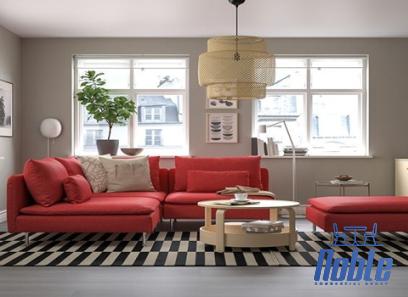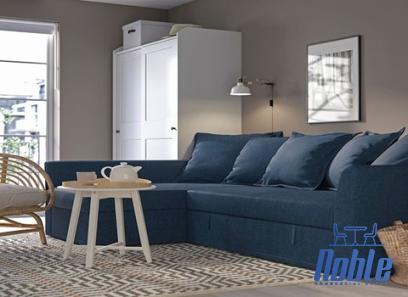The dining table, which has gold legs, is where people gather and is the center of the home, so it’s important to choose one that fits the space, enhances the aesthetic, and fits your budget.
Kitchens and dining tables have become this proteinaceous, utilitarian surface that has taken on a lot of responsibility these days. It’s where your guests gather, come for an impromptu weekend. It is where the children gather to complete their art projects. It’s also a place to sit with your family for hours, share laughs and think about the days ahead.
It can be a bit overwhelming if this is your first time shopping for a kitchen or dining table. Here’s some help.
How big should the dining room table be?
Whether you have a formal dining room where you set the table, or you’re just narrowing the space between your living room and open kitchen, measuring your space is the first step in ensuring balance and harmony.
The dining table must fit into the space without being too narrow or too small.
Too narrow, and the space will be overwhelmed.
Too small, and the space will look empty. Contrary to popular belief, the volume of the car does not fill a void.
Even if you’re a family of three, choose a table that seats five or six if you have the space.
How do you know if you have enough space? Here are some numbers to get you started.
Each person at the table should have at least 25 to 30 inches of space to eat comfortably without elbows bumping into each other.
In addition, there should be at least 3 feet of clearance between the wall and the furniture on all sides so that you and your guests can comfortably get in and out of the chair.
Anything smaller than this will fit too much into the available space.
What is the correct shape for a dining table?
Square and rectangular tables
Square and rectangular tables are generally suitable for large and long spaces. That doesn’t mean you can’t fit a square table in a small space. It just makes it very difficult to comfortably move around the serving table. The same as a rectangular table with a demanding footprint.
If a square or rectangular table bothers you, one solution is to use benches instead of chairs. When not in use, it can be stored under the table, saving space.
You can also choose a **folding leaf design** that can be folded away when not in use.
The advantage of rectangular tables is that there are many styles to choose from, both square and rectangular tables.
Many owners combine the shape of the table with the room. A square table in a square room, a rectangular table in a long narrow room.
round and oval tables
Round and oval shapes are great for smaller spaces as they make the most of every available space.
No corners.
Round and oval tables, especially pedestal-style tables, take up little space and can be placed anywhere without looking awkward. It blends in instantly, whether in a small corner or a large open dining room.
The caveat is that the larger the round table, the more difficult it is to reach and grab a bowl of mashed potatoes.
Pro Tip: Analyze Visually Before You Decide
If you can’t decide on a shape and size, here’s how to wrap your head.
Mark the designated areas for the kitchen and dining room table with painter’s tape. To get an idea of the height, fill the area with furniture of the same size. For example, a chair.
Take one or two sheets as needed and fold them to fit the size and shape of your table. This way, you know exactly how much space you need and how it will look in your environment.
What are the benefits of changing the material of the dining table?
In addition to aesthetics and dimensions, the table needs to be rock solid, easy to maintain, and suitable for the space around it. It is important to select the right materials and textures.
Your options are wide.
wood
A classic and unmistakable material available in almost all styles of furniture. It’s surprisingly low maintenance, extremely durable, and easy to fix if damaged. Hardwoods like oak, maple, hickory, and mahogany top the list, followed by cheaper varieties like mango, teak, and pine. If you’re on a tight budget, you may want to consider wood veneers that mimic the look of solid wood at a fraction of the cost. 
You can choose from extremely durable materials and a wide range of colors and patterns. Marble, granite, limestone, travertine, soapstone, slate, onyx, and quartzite are some natural stones used to make dining tables. However, some are expensive options, and some are prone to staining.
It has an open feel and is perfect for small spaces. You’ll never run out of options with clear, tinted, and frosted varieties. However, Glass is susceptible to chipping, scratching, and damage. Not to mention dirt and fingerprint magnets. But a few household cleaners and wipes can go a long way toward keeping you looking your best. A well-maintained glass table can last for years.
metal
Designers increasingly use metals like copper, iron, brass, and even silver to create kitchen and dining room tables. As well as being versatile enough to match any decor, metal tables are incredibly durable. If a tornado hits, get under one of these. However, it can be prone to staining. Not to say very heavy. If you’re looking for something that you can push and reset, an all-metal table isn’t a good choice.
The last word
Despite all the advice we can offer, choosing the right dining table is an intimate and personalized experience. Sit down and create a checklist of the best features you want on your dining table.
Do you prefer a round wooden table for an intimate candlelight dinner?
Crowds gather on the weekends. Do you want to extend your table?
A room may lack natural light, but a glass tabletop can mysteriously enhance it.
Keep checking off that checklist, and you should be able to decide which factors are most important to you.










Your comment submitted.